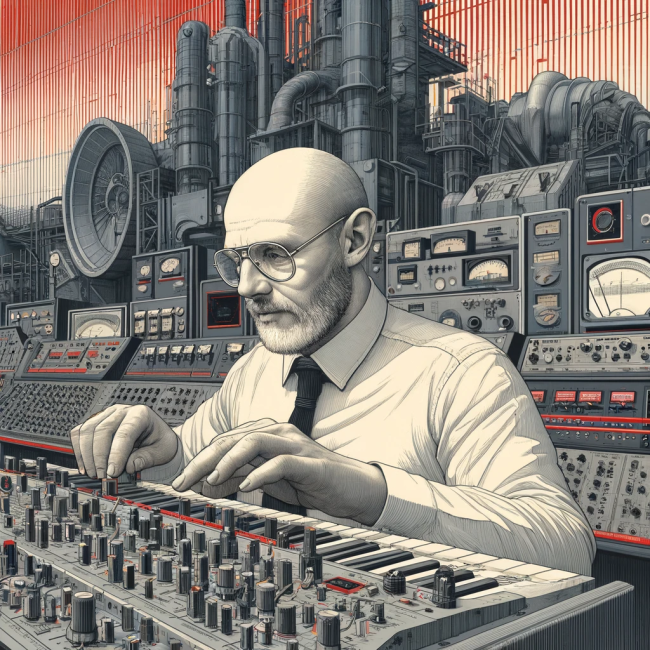Use agile frameworks to provide robust results
Unveiling Dreamworlds: The Role of AI in Crafting Fantastical Narratives and Visions
In the realm of creative exploration, the advent of Artificial Intelligence (AI) has inaugurated a new era of storytelling and visual artistry. AI, with its ever-evolving algorithms and machine learning capabilities, is now a crucial tool for artists and writers who seek to transcend the mundane and venture into the creation of dreamworld-like stories and images. This transformative technology not only assists in the creative process but also empowers creators to bring to life the most intricate and fantastical visions that dwell in the furthest reaches of imagination.
Breaching the Limits of Imagination
The cornerstone of AI’s contribution to creative arts is its ability to process and generate content at an unprecedented scale. For storytellers, AI-driven tools can analyze vast datasets of literature and visual art, learning the structural and thematic elements that captivate human audiences. By inputting a set of parameters or themes, creators can use AI to generate narrative elements, plot twists, or character archetypes that are both innovative and resonant with human emotions. This partnership between human creativity and artificial intelligence opens up new narrative possibilities, allowing stories to unfold in ways previously unimagined.
Painting Dreamscapes with Pixels
In the visual arts, AI’s impact is equally profound. Generative Adversarial Networks (GANs) and similar technologies enable artists to create visual dreamscapes that are stunningly detailed and deeply evocative. By training on diverse artistic styles and elements, AI can produce images that merge the surreal with the hyper-realistic, crafting scenes that might be impossible to capture or envision through traditional means. These AI-generated images are not mere replications of existing art but are instead unique creations that reflect the artist's intent and vision, bringing to life dreamworlds that stir the imagination and evoke a sense of wonder.
Collaborative Creation and Ethical Considerations
The relationship between AI and creators is inherently collaborative. AI serves as a muse, offering a plethora of options and variations that might not occur to the human mind. This collaboration extends the creative frontier, pushing artists and writers to explore themes, styles, and narratives beyond their conventional boundaries. However, this new frontier also comes with ethical considerations regarding originality, copyright, and the role of the creator. The creative community is thus tasked with navigating these challenges, ensuring that AI serves to enhance human creativity rather than supplant it.
Conclusion
AI's role in creating dreamworld-like stories and images represents a significant leap forward in the evolution of art and storytelling. By harnessing the power of AI, creators can delve deeper into the fabric of fantasy, bringing forth narratives and visuals that transport audiences to realms of untold beauty and complexity. As we stand on the brink of this new artistic horizon, the potential for AI-assisted creation is limitless, promising a future where our wildest dreams and deepest imaginations find expression in the stories we tell and the worlds we envision.

ABOUT THE ARTIST
Jan Vinoelst is an artist whose work spans across various musical projects, focusing predominantly on dark, electronic music that draws heavily on the aesthetic and sound of the 1980s. Based on the information available, Jan is involved in projects such as Messier 39, Cluster M13, and Cryptochroma. These projects highlight his penchant for analog synths, showcasing a deep appreciation for and influence from the new wave and dark wave genres prevalent in the 80s. His music is characterized by its rich, atmospheric textures and the use of vintage synthesizers, creating soundscapes that are both nostalgic and fresh.
Messier 39:
This project likely draws its name from an astronomical object, a celestial object seen as one star but in fact it consists of tons of far away stars acting together as one...The music under Messier 39 could be envisioned as a sonic journey utilizing synth-driven sounds and striking vocals by Ludwika Jakubowska to create an immersive experience. Aiming for Electronic and Analogue 80's sound.
Cluster M13:
Similar to Messier 39, Cluster M13's name is inspired by an astronomical cluster, suggesting themes of space and exploration. This project may explore the harsher and darker facets of electronic music, pushing the boundaries of Jan's sound into new territories.
Cryptochroma:
Cryptochroma, as a solo project, represents a more personal exploration of sound for Jan Vinoelst. The name itself, suggestive of hidden colors, could imply a focus on the unseen or unexplored aspects of music and sound, delving into the depths of dark wave and electronic music's potential.
Vinoelst's work is marked by a commitment to the analog and the authentic, seeking to recreate and innovate within the framework of 80s electronic music. His projects offer a modern take on a classic era, resonating with those who have a deep appreciation for the roots of electronic music as well as newcomers drawn to its dark, atmospheric qualities.
Jan Vinoelst prefers to maintain a focus on his music and artistic output, allowing the work itself to communicate with the audience.

Creating dreamworld-like stories
AI's role in creating dreamworld-like stories and images represents a significant leap forward in the evolution of art and storytelling. By harnessing the power of AI, creators can delve deeper into the fabric of fantasy, bringing forth narratives and visuals that transport audiences to realms of untold beauty and complexity.


